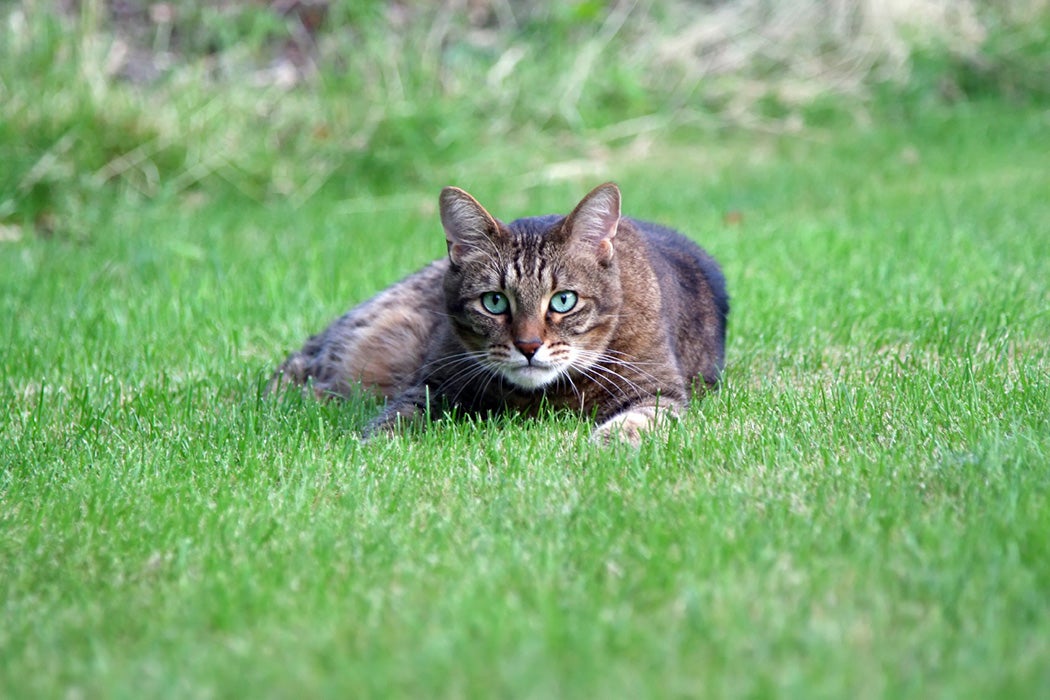Free-ranging domestic cats are an environmental disaster. They may be the most destructive invasive species, the “single greatest source of anthropogenic mortality for U.S. birds and mammals” according to a study (pdf) co-authored by scientists at the Smithsonian Conservation Biology Institute and the U.S. Fish and Wildlife Service. These authors found that domestic cats annually kill from 1.4-3.7 billion birds and 6.9-20.7 billion mammals in the U.S. “Unowned” or feral cats, as opposed to owned pets, cause the majority of this damage.
The literature on the subject of feral cats is substantial, and ranges from the modest to the encompassing. A. Whilde details the toll taken by two rural cats over three years, measured by corpses bought to his home. William G. George, writing in the middle 1970s, when the estimated U.S. cat population was a third of what it is now, detailed how cats compete with raptors for small mammal prey in winter. Coleman and Temple surveyed rural residents of Wisconsin on their attitudes to free-ranging cats and numbers thereof; they estimated 44 cats per square kilometer in their subject county.
Another problem is cross-breeding between domestic cats and wild cats and the corresponding loss of genetic singularity in the wild cats. In Europe, Africa, and Asia, populations of wild cats are threatened by hybridization with, as the four authors of this study in the Iberian Peninsula put it, “anthropogenically mediated dispersion of free-ranging domestic cats.” What’s at stake is the genetic uniqueness of the wild cats. In Europe, Felis silvestris silvestris is larger, longer-legged, and bushier than the domestic cat.
One solution might be convincing people to keep their cats indoors (though most of the problem is created by feral cats, with no homes to be kept in). Another solution might be found in coyotes, the natural predator of outdoor cats.







